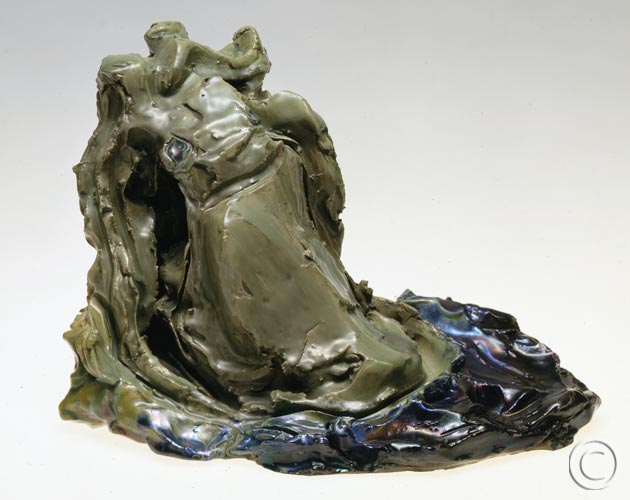
.jpeg)
Lucio Fontana, “Spatial Concept”, 1949-1950
Lucio Fontana's name is primarily associated with the so-called "holes" and "cuts" (in Italian, "buchi" and "tagli"), although at the very beginning of the artist's career there was nothing to suggest such a revolutionary turn of events. The son of the commercially successful but not particularly prominent sculptor Luigi Fontana, he was born in Argentina, in the city of Rosario. Fontana Sr., an Italian by birth, had a workshop there specializing in the production of tombstones. The boy's future seemed preordained: from childhood he helped his father in the workshop and then went to his historic homeland, Italy, to receive a classical art education. Lucio Fontana studied sculpture at the Brera Academy in Milan. He studied under Adolfo Wildt, one of the most important Italian sculptors of the early 20th century.
_01(1).jpg)
Adolfo Wildt “The Prisoner”, 1918, Private collection
Wildt's marble sculptures were a whimsical synthesis of features borrowed from the art of Antiquity, the Renaissance, the Gothic, the Baroque, and more modern trends such as Impressionism and Expressionism, but he managed to avoid lapsing into obvious eclecticism and to retain a sense of grandeur and even grandiosity in the works. Wildt's signature was absolutely original and recognizable - and probably far removed from the traditional funerary sculpture that Fontana had seen in his father's studio in his native Argentina. It was under Wildt's clear influence that Fontana created his early works "Olympic Champion" and the now lost "Black Man".
.jpeg)
Lucio Fontana “The Olympic Champion”, 1932. Plaster, Genus Bononiae Museum, Bologna

Lucio Fontana, “Black Man”, 1932. Plaster. Lost.
In the 1930s, Fontana became interested in ceramics, which were more expressive and malleable than plaster. Expressionism, which he had learned from Wildt, could be developed in clay to the point of almost losing figuration. In this technique he was able to achieve significant successes that were recognized by his contemporaries: Fontana was even mentioned in the programmatic futuristic manifesto “Ceramics and Aeroceramics" published in 1938 by the eminent ceramist Tullio d'Albisola and the legendary founder of Futurism, Filippo Tommaso Marinetti. Fontana, who had both professional and friendly relations with Tullio d'Albisola, was cited in the manifesto as an example of an abstract artist and Futurist.

Lucio Fontana, “Cuttlefish”, 1937. Ceramics